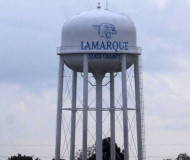8/5/2019
History: Photo Radar Cities In The 1980sA look back at the early photo radar programs in the late 1980s in Texas and California.

A pair of Texas cities, La Marque and Friendswood, decided to give speed cameras a try in 1986. Traffic Monitoring Technologies (TMT), was a then-new company based in Friendswood. It eventually became American Traffic Solutions, which is now Verra Mobility, the country's largest speed camera provider. TMT combined a Multanova 6F radar (a device still in use today) with a 400-watt flash and a 70mm Hasselblad film camera to create a system for generating automated speeding tickets. TMT agreed to perform all the work involved for each city.
The company generated just under 5000 tickets in Friendswood, but the public resisted the concept. Only about 40 percent of recipients actually paid the citations, so the sheriff began to arrest people for non-payment. Residents responded by pelting the speed camera with rocks. Sixteen trials went to a jury, and everyone accused by a machine was acquitted. Four convictions were appealed to a county court, and all were overturned. By July 1987 the county attorney had given up prosecuting cases in July 1987 after less than a year of use. LaMarque's experiment lasted less than three months.
"You could say there was a good bit of unhappiness," Jack Nash, La Marque's former mayor, told The Los Angeles Times. "It's just a screwed up system."
It became equally unpopular with officials in Friendswood.
"I'm certain it's a good system if you want to make money, but you're going to find that the community is going to lose its reputation very quickly," Galveston County Constable Paul Bess said. "It won't come back to my area."
In June 1988, Pasadena, California, invited TMT to come and set up automated ticketing machines. Although Pasadena's program lasted nearly four years, it was controversial from the start. Pasadena installed a sign at the city limits reading, "Smile, You're On Photo Radar."
"The traffic engineers designed that," Police Lt. Robert Huff told the Los Angeles Times. "I can see where some people might think we're saying, 'Smile, we're going to give you a ticket,' which would be a slap in the face."
The system rubbed it in by installing the opposite of a warning sign -- a notice on the side of the road drivers only saw after passing the camera that said, "You Have Just Passed Through Photo Radar (You May be Notified by Mail)." The first written response to a warning citation mailed in to the police was, as the Times described, "an anonymous note in red ink, complete with illustrations, exhorting the entire police department to commit an obscene act."
The program fell into legal difficulties when a motorist challenged the ticket on the basis that the vendor-owned Chevy Blazer with a Pasadena Police Department logo on its side had not been painted in the proper colors of a law enforcement vehicle as required under California law. Faced with lawsuits and public discontent, the city council dropped the program.


